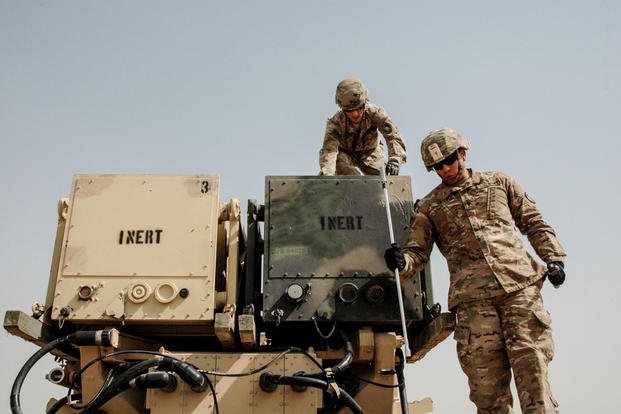Air and missile defense may not be the top priority under the Army's new modernization strategy, but in the past 15 months, the service has crafted a sophisticated, new approach to protecting ground forces from enemy air attack, acquisition czar Bruce Jette said Thursday.
In the past, the Army looked for single systems, such as the Patriot surface-to-air missile system, to handle air defense, said Jette, the assistant secretary of the Army for Acquisitions, Logistics and Technology (ASAALT).
"The way you [did] air defense is, 'OK, I've got this altitude, that altitude, that altitude and I need a system that works at this altitude, that altitude and that altitude,' " he told a group of reporters at a Defense Writers Group breakfast in Washington, D.C.
The systems were "standalone concepts, and the integration of them in a battlespace was purely done at the operator level," Jette said.
"Here is the Patriot battery. It stands alone, and all you've got to do is put fuel in the thing and a couple of soldiers and the thing works," he said.
Since then, the threat on the battlefield has changed, Jette said.
"The threat has become much more complicated. It's not just tactical ballistic missiles or jets or helicopters. Now, I've got UAVs, I've got swarms, I've got cruise missiles, I've got rockets, artillery and mortars," he said.
In October 2017, the Army launched its new modernization strategy, designed around special cross-functional teams, or CFTs, made up of members of the acquisitions, requirements and operational communities, to manage the service's six new modernization priorities. Those include long-range precision fires, next-generation combat vehicles, future vertical lift, a mobile network, air and missile defense and soldier lethality.
"So using the cross-functional teams, the technical side has come back and said, 'Listen, normally, if you want to deal inbounds that are not ... missiles -- things like rockets, artillery and mortars (RAM) -- the radars that comes with the Patriot battery are not the same radars that you need to see RAM,' " Jette said. "We have radars that see RAM, so why don't we integrate them into a network."
Northrop Grumman's Integrated Air and Missile Defense Battle Command System, or IBCS -- a system that "was in trouble" in the past because of "muddy requirements" -- will form the new air defense network, he said.
"We fixed the requirements. ... We've got an acquisition process in place and we are doing really well," Jette said. "We will be delivering next December systems that are deployable.
"So I don't deliver you a Patriot battery anymore, I deliver you missile systems, I deliver you radars, I deliver you a command-and-control architecture," he said. "They all integrate, and any of the command-and-control components can fire any of the missiles against any of the threats."
In the long term, the Army will work to integrate artificial intelligence into air defense, a capability that could help units engage incoming enemy threats faster than ever before, Jette said.
"We have a much more holistic view of where we are heading now in the air defense area," he added.
-- Matthew Cox can be reached at matthew.cox@military.com.










